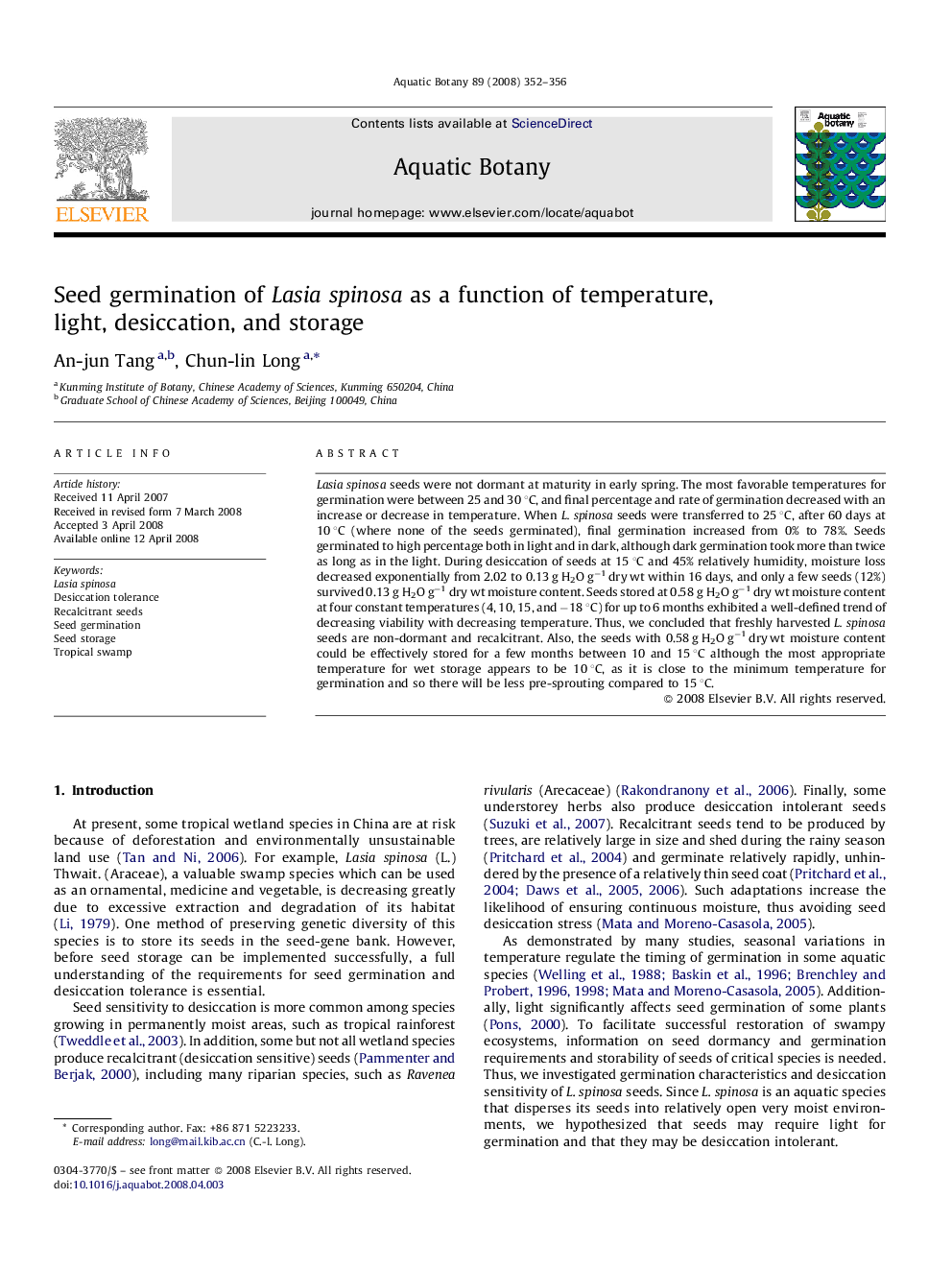| Article ID | Journal | Published Year | Pages | File Type |
|---|---|---|---|---|
| 4528382 | Aquatic Botany | 2008 | 5 Pages |
Lasia spinosa seeds were not dormant at maturity in early spring. The most favorable temperatures for germination were between 25 and 30 °C, and final percentage and rate of germination decreased with an increase or decrease in temperature. When L. spinosa seeds were transferred to 25 °C, after 60 days at 10 °C (where none of the seeds germinated), final germination increased from 0% to 78%. Seeds germinated to high percentage both in light and in dark, although dark germination took more than twice as long as in the light. During desiccation of seeds at 15 °C and 45% relatively humidity, moisture loss decreased exponentially from 2.02 to 0.13 g H2O g−1 dry wt within 16 days, and only a few seeds (12%) survived 0.13 g H2O g−1 dry wt moisture content. Seeds stored at 0.58 g H2O g−1 dry wt moisture content at four constant temperatures (4, 10, 15, and −18 °C) for up to 6 months exhibited a well-defined trend of decreasing viability with decreasing temperature. Thus, we concluded that freshly harvested L. spinosa seeds are non-dormant and recalcitrant. Also, the seeds with 0.58 g H2O g−1 dry wt moisture content could be effectively stored for a few months between 10 and 15 °C although the most appropriate temperature for wet storage appears to be 10 °C, as it is close to the minimum temperature for germination and so there will be less pre-sprouting compared to 15 °C.
